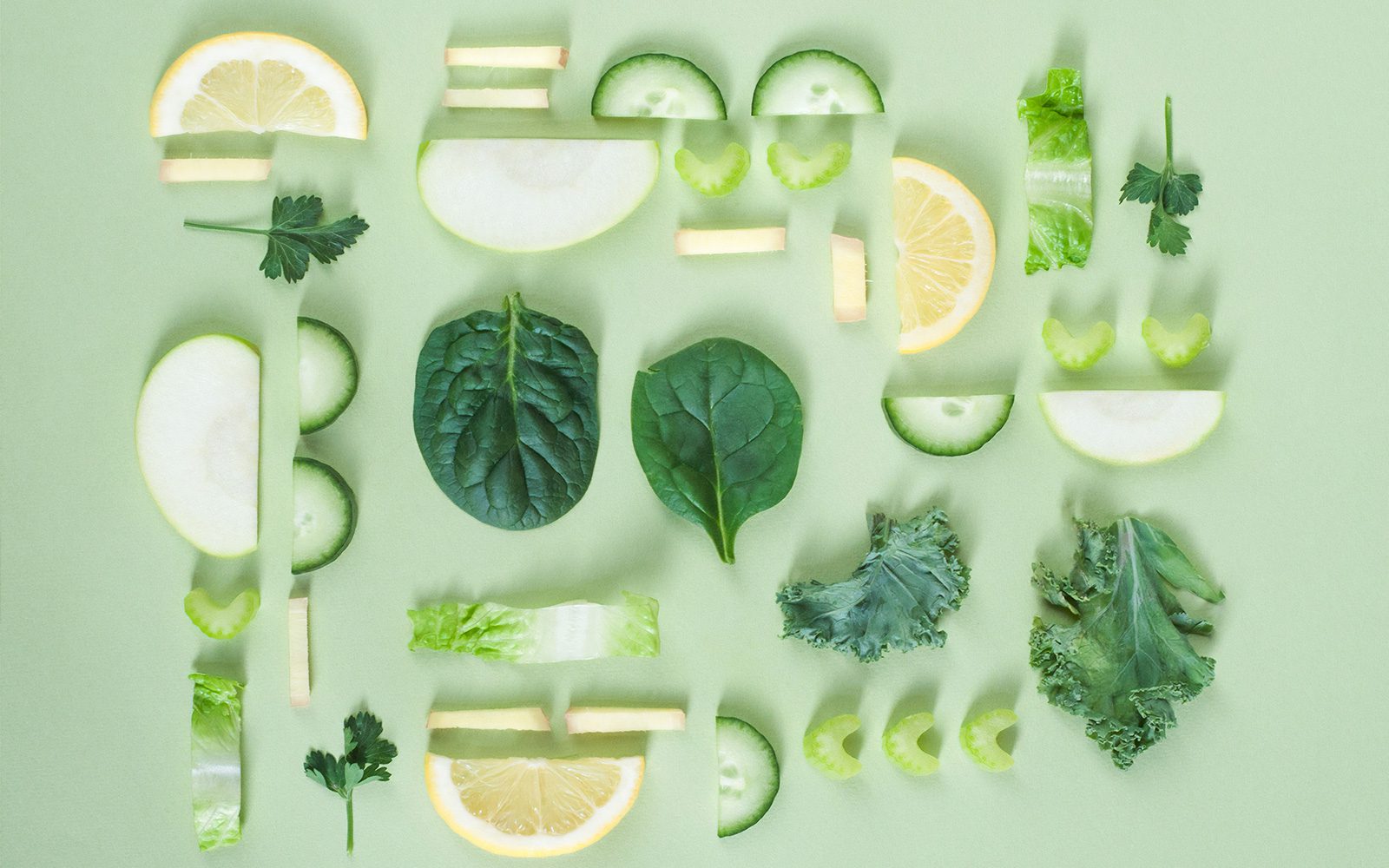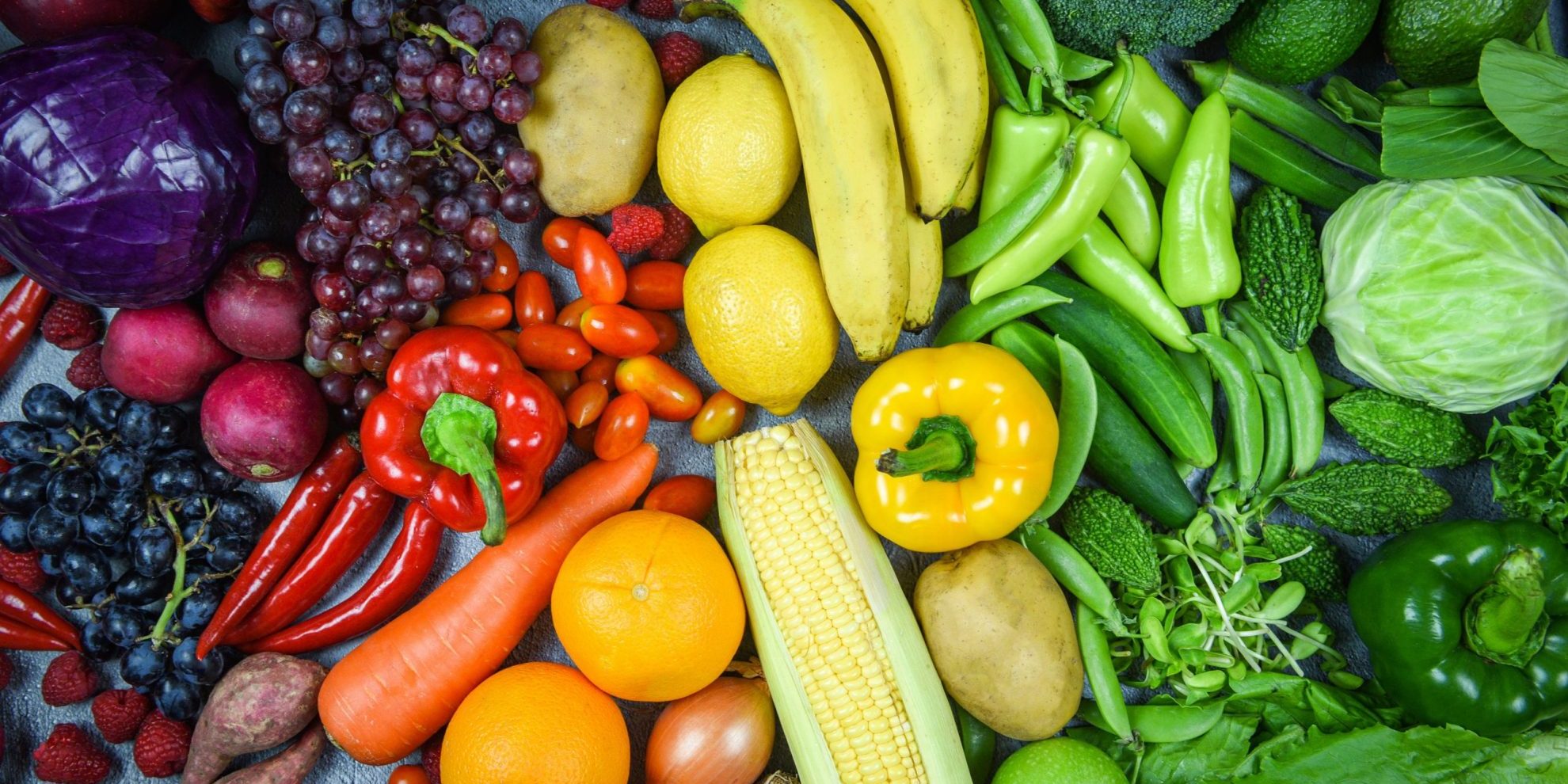Home>Gardening News and Trends>Latest News>How To Eat Vegetables When You Hate Them


Latest News
How To Eat Vegetables When You Hate Them
Modified: January 22, 2024
Discover the latest news on how to eat vegetables when you hate them. Explore effective tips and recipes to make eating vegetables more enjoyable and nutritious.
(Many of the links in this article redirect to a specific reviewed product. Your purchase of these products through affiliate links helps to generate commission for Chicagolandgardening.com, at no extra cost. Learn more)
Table of Contents
Introduction
Vegetables are an essential source of vital nutrients and contribute to a balanced and healthy diet. However, not everyone finds them enjoyable or appetizing. If you’re among those who dislike vegetables, you may feel discouraged or frustrated about incorporating them into your meals. But fear not! In this article, we will explore various strategies to help you overcome your aversion to vegetables and learn to enjoy them.
Understanding your vegetable aversion is the first step towards finding a solution. For many individuals, it can be a matter of taste or texture. Some people may have grown up eating overcooked or poorly prepared vegetables, creating negative associations that have stayed with them into adulthood. Others may have a heightened sensitivity to certain flavors or textures found in vegetables. Regardless of the reason, there are ways to overcome these challenges and develop a newfound appreciation for vegetables.
One approach to overcoming the taste of vegetables is to experiment with different cooking methods. Some vegetables taste vastly different when prepared in various ways. For example, if you dislike steamed broccoli, you might find that roasting it with olive oil and garlic transforms the flavor and texture into something more palatable. Don’t be afraid to try different cooking techniques such as grilling, sautéing, or stir-frying to discover what works best for you.
In addition to exploring different cooking methods, pairing vegetables with flavors you enjoy can make them more appealing. Adding herbs, spices, or sauces that you love can help enhance the taste of vegetables and make them more enjoyable to eat. For instance, if you don’t enjoy the taste of plain cauliflower, try seasoning it with cumin, paprika, or your favorite seasoning blend to infuse it with exciting flavors.
Sneaking vegetables into your meals is another clever strategy. By incorporating vegetables into dishes you already enjoy, you can reap the nutritional benefits without even realizing it. For example, you can blend leafy greens like spinach or kale into smoothies, add finely chopped vegetables to pasta sauces or soups, or even grate zucchini into baked goods like muffins or bread.
Expanding your culinary horizons by trying new and exotic vegetables can also be an exciting way to overcome your aversion. Visit local farmers’ markets or specialty grocery stores to discover an array of unique and flavorful produce. Trying new vegetables and incorporating them into your recipes can not only add variety to your meals but also help you find new favorites that you may have never considered before.
If you’re struggling to change your mindset or implement these strategies on your own, seeking professional guidance and support can be beneficial. Consulting with a nutritionist or a registered dietitian can provide you with personalized advice and tailored meal plans to help you incorporate vegetables into your diet in a way that suits your taste preferences.
Remember, developing a taste for vegetables is a process that takes time and patience. Don’t be discouraged if you don’t immediately enjoy them. Keep trying different cooking methods, flavors, and recipes until you find what works for you. With persistence and an open mind, you can overcome your aversion to vegetables and discover the joy and health benefits of incorporating them into your diet.
Understanding your vegetable aversion
It’s not uncommon for people to have an aversion to vegetables. This dislike can stem from various factors, including taste, texture, past experiences, or sensory sensitivities. Understanding the root cause of your vegetable aversion is an important step in finding ways to overcome it and develop a healthier relationship with these nutrient-packed foods.
For many individuals, the taste and texture of vegetables can be off-putting. Some vegetables may have a bitter or earthy taste that doesn’t appeal to everyone’s palate. Additionally, the texture of certain vegetables, such as slimy okra or fibrous broccoli, can be a challenge for those who prefer smoother or more tender foods.
Another factor that contributes to vegetable aversion is past experiences with poorly prepared or overcooked vegetables. If you grew up eating mushy or flavorless vegetables, you may have developed a negative association with them. These negative associations can linger into adulthood, making it difficult to approach vegetables with an open mind.
Sensory sensitivities can also play a role in vegetable aversion. Some individuals have a heightened sensitivity to certain smells, tastes, or textures, making it more challenging for them to enjoy a wide variety of foods, including vegetables. This sensitivity can be genetic or the result of other health conditions.
To better understand your specific vegetable aversion, take some time to reflect on your experiences and preferences. Ask yourself questions like: Do I have specific vegetables that I dislike more than others? Is it the taste, texture, or both that I struggle with? Did I have any negative experiences with vegetables in the past? By gaining clarity on your aversion, you can begin to tailor your approach towards overcoming it.
Remember that everyone’s taste preferences are unique, and there are no right or wrong answers when it comes to liking or disliking vegetables. However, incorporating vegetables into your diet is vital for optimal health and nutrition. By addressing your aversion and finding ways to make vegetables more enjoyable, you can ensure you’re getting the necessary vitamins, minerals, and fiber your body needs.
Stay tuned for the following sections, where we will explore various strategies and techniques to help you overcome your vegetable aversion. With a willingness to try new things and a little perseverance, you’ll be on your way to embracing the vibrant world of vegetables and reaping all the health benefits they have to offer.
Overcoming the taste
The taste of vegetables is often cited as one of the main reasons for vegetable aversion. However, with a few simple strategies, you can overcome the taste and start appreciating the flavors that vegetables have to offer.
One approach to overcoming the taste of vegetables is to experiment with different cooking methods. Some vegetables taste vastly different when prepared in various ways. For example, if you find the taste of steamed broccoli unpleasant, you might discover that roasting it with a drizzle of olive oil and a sprinkle of salt and pepper transforms it into a delicious and flavorful side dish. By trying out different cooking techniques such as grilling, sautéing, or stir-frying, you can uncover new and enjoyable flavors.
In addition to trying different cooking methods, seasoning can greatly enhance the taste of vegetables. Experiment with adding herbs, spices, or sauces that you enjoy to your vegetables. For instance, if you’re not a fan of plain steamed cauliflower, try adding a pinch of turmeric and a dash of cumin to infuse it with warm and aromatic flavors. The right seasonings can help mask any undesirable tastes and make vegetables more appealing to your palate.
Pairing vegetables with ingredients or flavors that you already enjoy can also make them more tasty and enjoyable. For example, if you love the taste of garlic, try sautéing your vegetables with some minced garlic. If you enjoy tangy or acidic flavors, drizzling a little bit of lemon juice over your cooked vegetables can add a refreshing zing. Finding complementary ingredients can help balance out the taste and make vegetables more palatable.
Texture can also play a role in the taste of vegetables. If you’re not a fan of certain textures, consider different cooking methods that can alter the texture to suit your preferences. For example, if you dislike the sliminess of okra but enjoy crispy textures, try baking slices of okra in the oven until they turn crisp and crunchy. Play around with different textures to find what works best for you.
Lastly, it’s important to have an open mind and give vegetables multiple chances. Sometimes, it takes a few tries before our taste buds adjust and start appreciating new flavors. Give yourself the opportunity to taste vegetables prepared in different ways multiple times before making a final judgment. Your taste preferences can evolve over time, so don’t be discouraged if you didn’t enjoy something in the past.
By experimenting with different cooking methods, seasonings, pairings, and being open-minded, you can gradually overcome the taste of vegetables and discover new and delicious ways to incorporate them into your diet. Stay motivated, keep trying, and remember that persistence is key when it comes to developing a taste for vegetables.
Experimenting with different cooking methods
One of the keys to overcoming your vegetable aversion and making them more enjoyable is to experiment with different cooking methods. You’ll be surprised by how much the taste and texture can change with just a simple adjustment in the way you cook your vegetables.
One popular cooking method for vegetables is steaming. Steaming is a gentle and healthy way to cook vegetables, as it helps retain their natural flavors and nutrients. However, if you find that steamed vegetables taste bland or have a mushy texture, it’s worth exploring other techniques.
Roasting is an excellent method for enhancing the flavors of vegetables. By roasting vegetables in the oven at a high temperature, you can achieve a delicious caramelization that brings out their natural sweetness. The result is vegetables that are tender on the inside and slightly crispy on the outside. Try roasting vegetables like Brussels sprouts, carrots, or bell peppers with your favorite herbs and spices for a flavorful twist.
Grilling is another excellent option for adding depth and smokiness to your vegetables. Whether you’re using a grill pan indoors or firing up the barbecue, grilling can turn vegetables into a mouthwatering dish. Try grilling zucchini, eggplant, or asparagus for a delightful charred flavor.
Sautéing is a quick and simple method that can result in flavorful and tender vegetables. Heat up a bit of oil or butter in a pan, add your vegetables, and cook them over medium heat until they are crispy and slightly browned. Sautéing works well for vegetables like mushrooms, onions, or spinach.
Stir-frying is a popular cooking technique in Asian cuisine that quickly cooks vegetables at high heat, maintaining their crunchiness. The key to successful stir-frying is to chop the vegetables into even-sized pieces and have all your ingredients prepped and ready to go. Stir-fry vegetables like bok choy, snap peas, or bell peppers with soy sauce, ginger, and garlic for a flavorful stir-fry.
Another innovative cooking method for vegetables is griddling. This technique involves cooking vegetables on a grill pan with raised ridges, creating those beautiful char marks. Griddling adds a smoky flavor and gives vegetables a visually appealing appearance. Try griddling vegetables like zucchini, peppers, or corn for a delicious side dish.
By trying out different cooking methods, you can find the ones that bring out the best flavors and textures of your vegetables. Don’t be afraid to experiment and get creative in the kitchen. Mix and match different vegetables with various cooking techniques and seasonings until you discover your favorite combinations. The possibilities are endless, and you may find yourself enjoying vegetables in ways you never thought possible.
Pairing vegetables with flavors you enjoy
If the taste of vegetables is a major deterrent for you, one effective strategy to make them more enjoyable is to pair them with flavors you already love. By adding herbs, spices, sauces, or other ingredients that appeal to your taste buds, you can enhance the flavor profile of vegetables and create more appetizing dishes.
One popular way to add flavor to vegetables is through the use of herbs and spices. Herbs like basil, parsley, cilantro, or dill can add freshness and depth to your dishes. Sprinkle chopped herbs over roasted or sautéed vegetables to infuse them with a burst of aromatic flavors. Spices, such as cumin, paprika, turmeric, or chili powder, can bring warmth and complexity to your vegetable dishes. Experiment with different combinations to find the ones that resonate with your taste preferences.
Sauces and dressings are another fantastic option to jazz up the flavors of vegetables. For example, if you enjoy the tanginess of vinaigrettes, drizzle your roasted vegetables with a balsamic glaze or a lemon-infused dressing. You can also try tossing your vegetables in a homemade pesto or a spicy peanut sauce. These additions not only add flavor but also provide a creamy or zesty texture that can make the vegetables more enjoyable to eat.
Adding a hint of acidity can also brighten up the taste of vegetables. Squeeze a bit of lemon or lime juice over your steamed or roasted vegetables to add a refreshing citrusy kick. Alternatively, you can experiment with different types of vinegar, such as apple cider vinegar or balsamic vinegar, to add a tangy twist. The acidity helps balance out the flavors and can cut through any bitterness in certain vegetables.
If you enjoy umami flavors, consider incorporating ingredients like soy sauce, tamari, or miso paste into your vegetable dishes. These fermented products add depth and richness to the taste, making vegetables more savory and satisfying. A drizzle of soy sauce or a spoonful of miso can transform a simple stir-fry or a roasted vegetable medley into a mouthwatering and flavorful dish.
Don’t be afraid to experiment and combine flavors that you love but might not typically associate with vegetables. For example, if you enjoy spicy foods, add some crushed red pepper flakes or hot sauce to give a kick to your vegetable stir-fries. If you have a sweet tooth, try roasting vegetables like carrots or sweet potatoes with a sprinkle of cinnamon or a drizzle of honey for a delightful hint of sweetness.
Remember, the goal is to find flavors that complement and enhance the taste of the vegetables, making them more enjoyable for you. By pairing vegetables with flavors you already love, you can transform them into delicious, flavorful creations that will have you eagerly reaching for your greens.
Sneaking vegetables into your meals
If you have a strong aversion to vegetables, sneaking them into your meals can be an effective way to incorporate their nutritional benefits without even realizing it. By creatively blending or disguising vegetables in dishes you already enjoy, you can gradually increase your vegetable intake and develop a taste for them over time.
One sneaky way to add vegetables to your diet is by incorporating them into smoothies. Leafy greens like spinach or kale can easily be blended with fruits, yogurt, or nut milk to create a delicious and nutrient-packed smoothie. You won’t even notice the taste of the greens, but you’ll still reap the benefits of their vitamins and minerals.
Vegetables can also be added to sauces and soups, becoming almost invisible in the final dish. Blend cooked carrots, bell peppers, or squash into your pasta sauce for an additional burst of nutrients. Similarly, puree vegetables like cauliflower or broccoli into creamy soups, adding both flavor and texture to the dish.
Grating or finely chopping vegetables can help them blend seamlessly into various recipes. Add grated zucchini or carrots to your muffin or bread batter for extra moisture and nutrition. Finely chop bell peppers, mushrooms, or onions and incorporate them into meatballs or hamburgers for an added dose of flavor and texture.
Another clever idea is to swap out traditional ingredients with vegetables. For example, instead of using regular pasta, try spiralizing zucchini or butternut squash to create “zoodles.” These vegetable noodles can be used as a base for your favorite pasta sauces or stir-fries, providing a lighter and more nutritious alternative.
Adding vegetables to your favorite comfort foods is another way to sneak them into your meals. For instance, mix pureed cauliflower or mashed sweet potatoes into macaroni and cheese for a creamy and vegetable-packed version. By incorporating veggies into familiar dishes, you’ll gradually become accustomed to their taste and enjoy the added nutritional value.
If you love pizza, consider trying a cauliflower crust or adding a variety of colorful vegetables as toppings. This way, you’re still enjoying your favorite dish while adding a healthy twist. You can also create vegetable-loaded wraps or sandwiches by stacking lettuce, tomatoes, cucumbers, and other fresh vegetables with your favorite protein and condiments.
Remember, the goal is to increase your vegetable intake in a way that feels enjoyable and accessible to you. Sneaking vegetables into your meals allows you to gradually get used to their taste and texture, making them a regular part of your diet. Start small and try different techniques until you find the ones that work best for you.
With time, you’ll not only be nourishing your body with vital nutrients but also developing a greater appreciation for the diverse and delicious world of vegetables.
Trying new and exotic vegetables
One way to overcome your aversion to vegetables is to step out of your comfort zone and try new and exotic varieties. Exploring the diverse world of vegetables can introduce you to exciting flavors, textures, and culinary experiences that you may have never encountered before.
Visit local farmers’ markets or specialty grocery stores to discover a wide range of unique and exotic vegetables. These places often offer a selection of produce that you may not find in regular supermarkets. Look for vegetables like kohlrabi, Romanesco, dragon fruit, or watercress, and experiment with incorporating them into your meals.
When trying new vegetables, start by researching their flavor profiles and cooking methods. Some may taste best when raw or lightly cooked, while others may benefit from roasting or sautéing. By understanding the optimal preparation techniques, you can ensure that you’re bringing out the best flavors and textures in each vegetable.
Don’t be afraid to experiment with different recipes and cuisines that feature these exotic vegetables. Explore international cuisines like Thai, Indian, or Mediterranean, which often incorporate a wide variety of vegetables in their dishes. This can expose you to new ways of cooking and enjoying vegetables, expanding your culinary horizons.
To make the process more enjoyable, involve friends or family members in your exploration of exotic vegetables. Plan potluck-style gatherings where everyone brings a dish featuring a unique vegetable. This way, you can share experiences, exchange recipes, and learn from each other’s discoveries.
As you try new vegetables, keep an open mind and embrace the adventure. Not every vegetable may become an instant favorite, but the goal is to discover new flavors and expand your palate. By incorporating a variety of vegetables into your meals, you’ll add diversity to your diet and increase your exposure to different nutrients.
Remember that trying new and exotic vegetables is an ongoing journey. Take your time and experiment at your own pace. Keep a record of the vegetables you have tried, noting your thoughts on taste, texture, and any specific cooking techniques you enjoyed. This will help you track your progress and identify the vegetables that you genuinely enjoy.
By being open to new experiences and embracing unfamiliar vegetables, you’ll find that your aversion towards them gradually diminishes. You may even discover new favorites that you never thought would become a regular part of your diet. So go ahead, embark on a vegetable adventure, and let your taste buds explore the exciting world of exotic produce.
Seeking professional guidance and support
Overcoming a strong aversion to vegetables can be challenging, and it’s completely understandable if you need some extra help along the way. Seeking professional guidance and support from a nutritionist or a registered dietitian can provide you with the expertise and personalized advice to navigate this journey successfully.
A nutritionist or dietitian can assess your dietary needs, preferences, and aversions, and create a tailored meal plan specifically designed to help you incorporate more vegetables into your diet. They can provide you with practical tips, recipe ideas, and cooking techniques that suit your individual taste preferences. They will work with you to set achievable goals and provide ongoing support and guidance throughout your journey.
These professionals can also help you understand the nutritional benefits of vegetables and how they contribute to overall health and well-being. They can explain the impact of different vegetables on specific health conditions or dietary requirements, ensuring that you’re making informed choices that align with your individual needs.
Additionally, a nutritionist or dietitian can help you address any underlying issues that may be contributing to your aversion to vegetables. They can help you explore the root causes of your aversion and develop strategies to overcome those challenges. Whether it’s addressing sensory sensitivities, past negative experiences, or taste preferences, a professional can provide valuable insights and tools to help you overcome these hurdles.
If you find it challenging to change your mindset or implement the strategies discussed in this article on your own, seeking professional guidance can be a game-changer. A nutritionist or dietitian can provide the structure, accountability, and expertise needed to make progress towards your goals.
In addition to professional guidance, finding support from friends, family, or online communities can also be beneficial. Connecting with others who have similar goals or experiences can provide encouragement, accountability, and the opportunity to exchange tips and ideas. Sharing your journey with others allows you to receive support and advice from like-minded individuals who understand the challenges you’re facing.
Remember, seeking professional guidance and support is not a sign of weakness but a proactive step towards improving your relationship with vegetables and achieving your health goals. By teaming up with experts and building a support network, you’ll have the resources and encouragement to tackle your vegetable aversion head-on and create long-lasting changes that positively impact your overall well-being.
Conclusion
Overcoming a deep aversion to vegetables may seem like a daunting task, but with the right strategies and a willingness to try new things, it is entirely possible to develop a taste for these nutrient-packed foods. Understanding the root causes of your vegetable aversion and addressing them head-on is the first step towards embracing vegetables in your diet.
Experimenting with different cooking methods allows you to discover the flavors and textures that resonate with your taste preferences. By pairing vegetables with flavors you enjoy, you can enhance their taste and make them more appetizing. Additionally, sneaking vegetables into your meals and trying new and exotic varieties can broaden your culinary horizons and gradually expand your palate.
Seeking professional guidance and support, whether from a nutritionist or a registered dietitian, can provide you with personalized advice, meal plans, and ongoing support to help you overcome your vegetable aversion. They can address any underlying issues and provide strategies to make your journey more successful.
Throughout this process, it’s important to approach it with an open mind and be patient with yourself. Developing a taste for vegetables takes time and persistence. Celebrate small victories and be willing to try different approaches until you find what works for you.
Remember, incorporating vegetables into your diet is essential for overall health and well-being. They provide essential vitamins, minerals, and fiber while contributing to a balanced and nutritious eating plan. By gradually overcoming your aversion and embracing vegetables, you’ll not only improve your physical health but also discover a whole new world of delicious and satisfying flavors.
So, take the first step today and embark on a journey of vegetable exploration and growth. With determination, support, and a touch of creativity, you can overcome your vegetable aversion and create a healthier and more vibrant relationship with these amazing plant-based foods.










